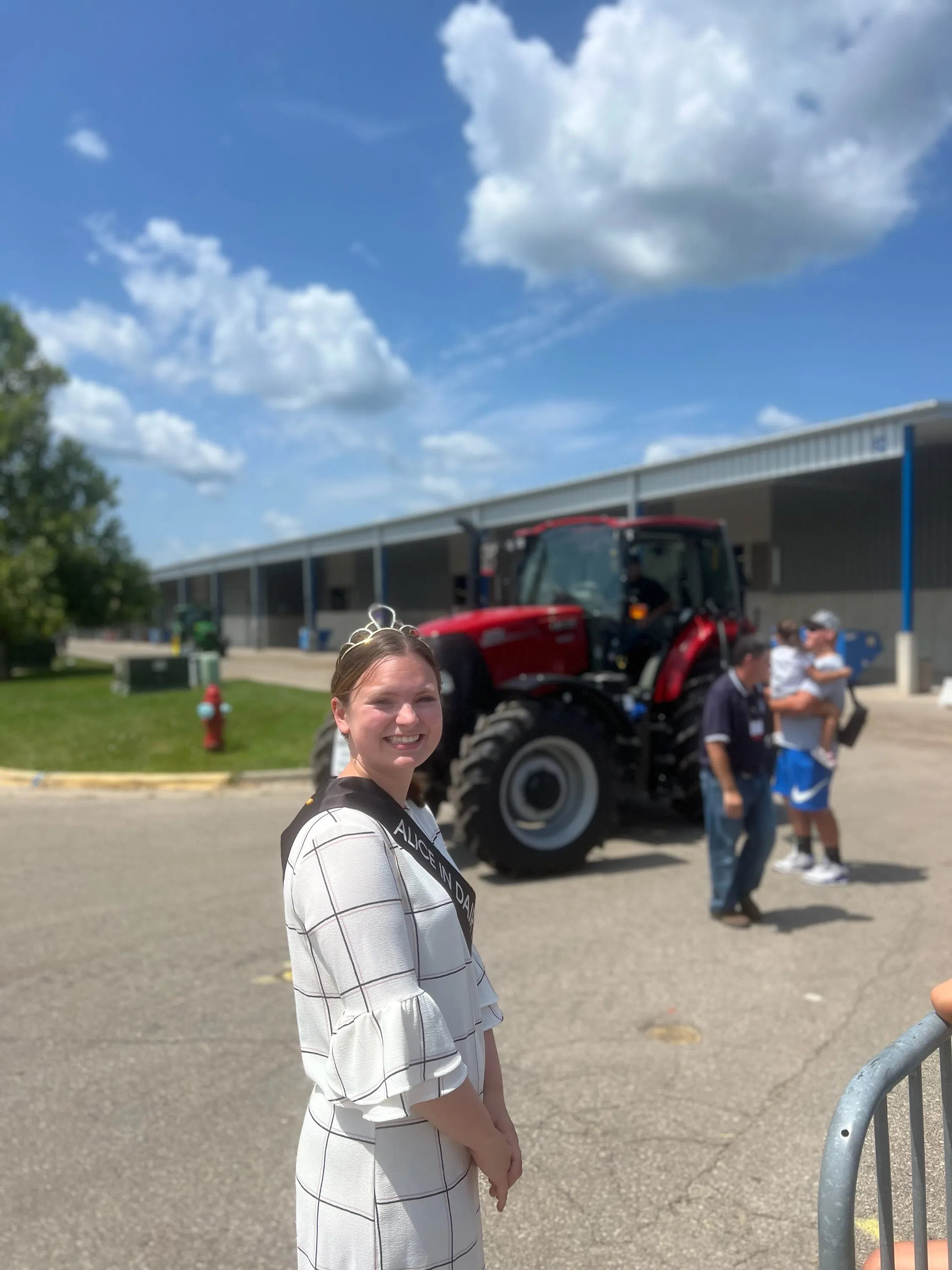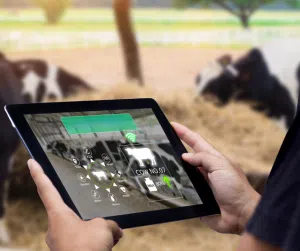
Tractors today may include a wide variety of technology built in, including GPS capabilities, auto-steer, or higher input efficiency Halei Heinzel, 77th Alice in Dairyland, is photographed with a tractor while at Dane County Fair.
Taking care of farm chores used to involve bringing the bucket out to the barn to milk the cows by hand and plowing your field using animals. Today, farms across the world are using mapping technologies, temperature and moisture sensors, robots, aerial images and more in their daily lives. These technologies have allowed farms to become more profitable, efficient, safer, and better for the environment.
Robotic systems are one form of technology used by our farmers. Crop farmers may combine the use of precision agriculture and robotics to plant, monitor, spray, weed, sort, and pack their products. On farms with livestock, robotic systems can be implemented to feed or milk the animals, herd them to where they need to go, or clean out the barns. Monitors can also be used on livestock to help track their heat cycles, activity, potential illness, and more. These systems can help with labor shortages when sub-minimum wage jobs can be automated, helping keep food costs lower.
Precision agriculture is another way technology is used by our farmers. According to the United States Department of Agriculture, “applying the right resources in the right place at the right time can be a win- win for farmers and the environment. This approach, known as precision agriculture, lets farmers use cutting-edge tools to get specific, detailed information on individual bits of land or even plants in their fields.” This technology allows farmers to input exactly what the plants need, reducing run-off and over fertilization, reducing costs, and increasing plant yields.
I rely heavily on GPS technologies to help my trusty vehicle Tassie and me as we travel across the state of Wisconsin, but it can do more than just help us get from point A to B! Geographic information systems (GIS) and global positioning systems (GPS) work together to provide a detailed analysis of real-world information. GIS stores data about spaces, such as barns, fields, grain bins, or roads, to help map and store information about locations. The satellites that make up GPS technologies can pinpoint a user’s location and layer it over GIS information. This information can be used in tractor guidance, which, according to the USDA, results in accuracy within one centimeter to plant, spray herbicide, or spread fertilizer across the fields.
Technology in agriculture is better for the business, the animals, the workers, the consumers, and the environment. I sure am looking forward to learning more about how technology continues to play a
bigger role in agriculture across the state while I serve as Wisconsin’s 77th Alice in Dairyland!

Technology is used in animal agriculture through robotic systems, animal welfare management, and more, ensuring the happiest, healthiest animal possible.

Drones can be used to monitor moisture levels, nutrients, and crop health, especially in areas farmers may have trouble accessing.





Comments